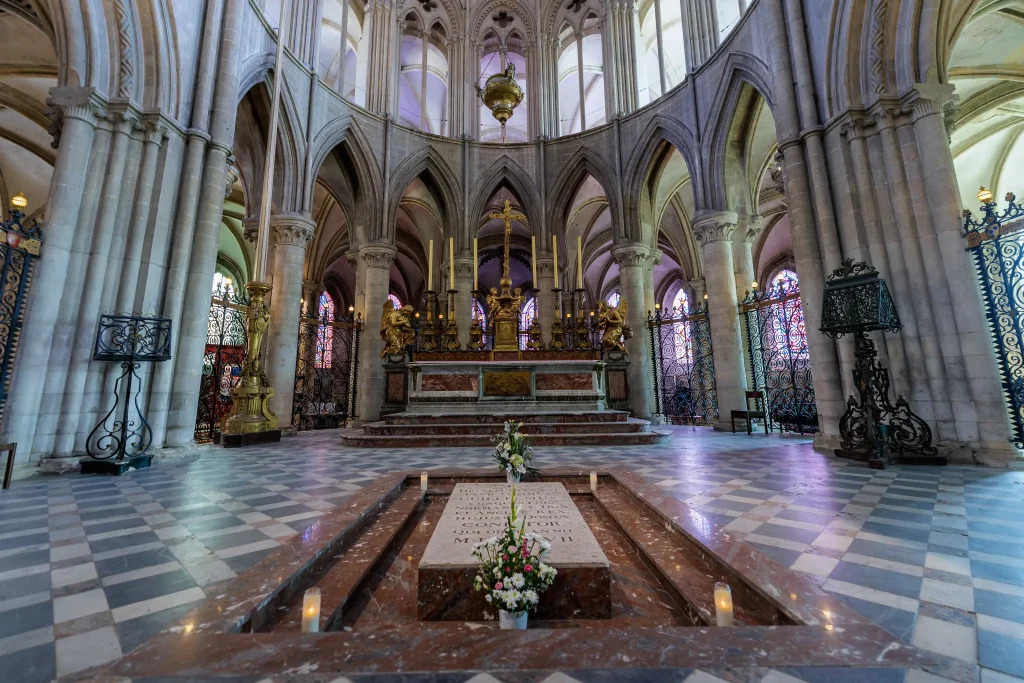In the heart of Normandy stands a monument to one of Europe’s most consequential rulers. Inside the Abbaye aux Hommes—the Men’s Abbey, also known as Saint-Étienne Abbey—in Caen, France, lies a simple marble tomb marking the final resting place of William the Conqueror.

Born around 1028, William rose from Duke of Normandy to become a formidable force in European history. His decisive victory at the Battle of Hastings in 1066 brought England under Norman rule, setting in motion sweeping changes to the kingdom’s language, law, and social order. He was the first Norman King of England, and his reign reshaped the destiny of a nation.
William founded the abbey as an act of penance, after marrying his cousin Matilda of Flanders against Church law. When he died in 1087, his body was brought here to rest within the walls of the church he had endowed. Yet his remains would not know peace. Over the centuries, his tomb was desecrated multiple times—most violently during the French Revolution. Today, only a single bone, believed to be a femur, is thought to remain.
The tomb we see now, adorned with flowers and lit by candles, is at once modest and monumental. It speaks to the paradox of William’s legacy: a man who conquered kingdoms and changed history, yet whose earthly remains were reduced almost to nothing. The stone slab is a reminder of ambition’s reach and mortality’s certainty—a place of quiet reflection on how even the most powerful lives can end in fragility.